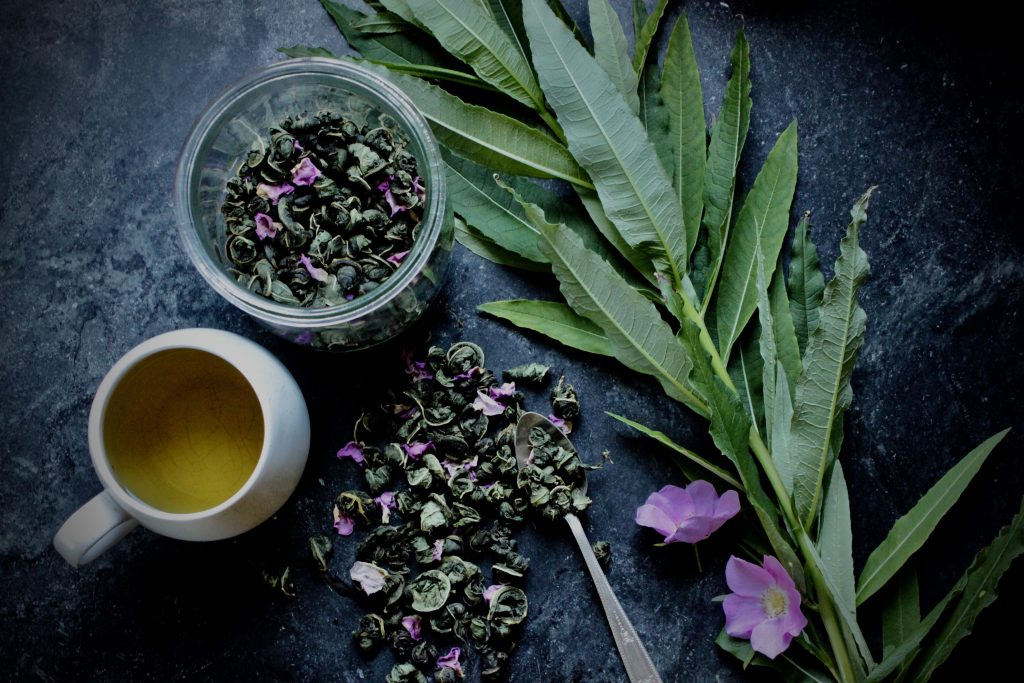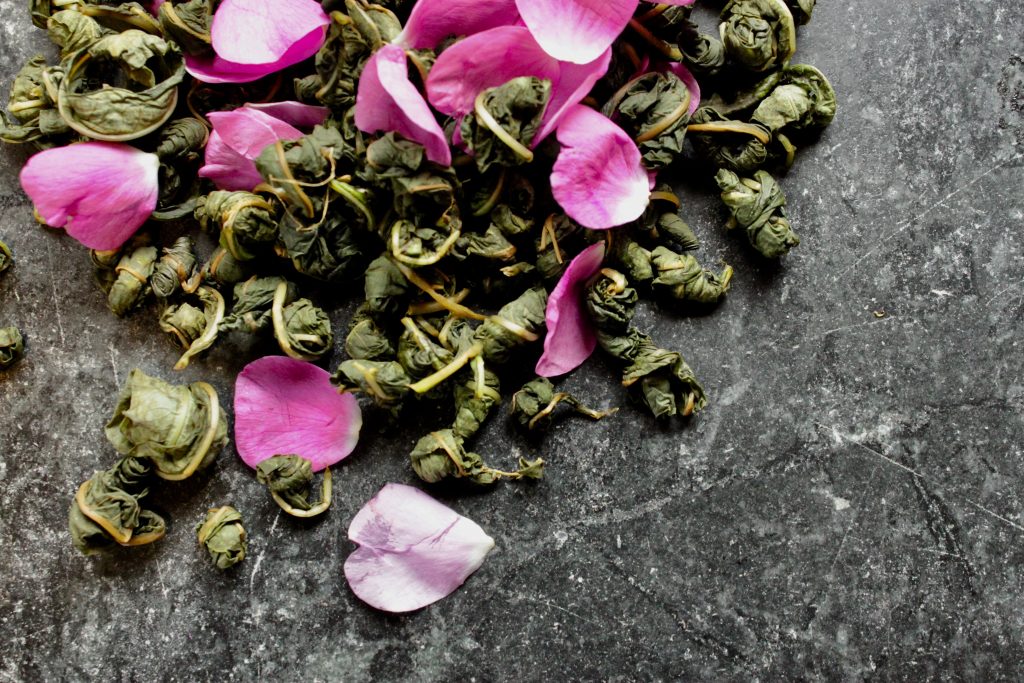
History & Health Benefits
Fireweed (chamerion angustifolium) is one of the most quintessentially Alaskan plants. It grows plentifully throughout the state, under amazingly diverse growing conditions. Considered to be a pioneer species, it is one of the first plants to regrow in disturbed soils—especially after deforestation or wildfire, hence its name. It also goes by willowherb, or rose-bay willowerb if you want to sound extra fancy.
There are many uses for fireweed, aside from basking in its glorious magenta beauty in the late summer and early fall, and feeling slightly depressed at the old adage that when the blooms get to the top of the plant winter is just around the corner. It is edible at all stages of growth, but right now, around the summer solstice, it is the perfect time to harvest the leaves and make fireweed tea, also known as Ivan Chai.
Ivan Chai (sometimes called willowherb tea or Baikal tea) used to be one of the main exports of Russia, just behind fur and flax. It was one of the most commonly brewed teas in Europe before black & green teas stole the show. Now Ivan Chai is hard to find unless you are in Russia, where it is still available in supermarkets. This caffeine free beverage is reported to have fever-reducing and energy boosting properties, as well as the ability to help the body process toxins and relieve headaches. It is rich in anti-oxidants and vitamins C and A.
It is my own totally unscientific opinion that traditional preparations of plants from your local ecosystem are probably uniquely tailored to health issues that are common to that particular geographic location. Here in the northern climates where we have long dark winters without much sun, it stands to reason that we can benefit from the extra boost of vitamins and anti-oxidants once our beautiful summer has passed and we find ourselves spending more time indoors with people coughing on us. Does that not happen to you? You need to hang out with kids more.
When prepared right, your cuppa fireweed tea can be a little dose of summer goodness on even the dreariest winter day. You CAN buy fireweed tea in small batches for about $1.50/oz from vendors online, but lucky for those of us that live in Northern places where fireweed grows plentifully, it is easy to make and delicious to drink. It also makes a beautiful, zero-waste gift for your tea-drinking friends and family.

The Process
1. Collect your fireweed. It grows pretty much everywhere here in southcentral Alaska, but I recommend not collecting it on busy roadsides. Don’t collect it on a rainy day, or when it is heavily wet from morning dew. Collecting wet herbs can cause problems with mold when they are drying. I collect mine in my yard, on sunny afternoons, in areas where I know my dog or children don’t pee. If you don’t have any in your yard, go for a hike or hit up your neighbors! Choose plants with smaller more tender leaves. If you are doing this later in the summer when the plant is blooming, use the smaller leaves at the top of the plant and save the big leaves & stalks for your compost.
2. Wilt your fireweed. Find a dry place out of direct sunlight and let your fireweed wilt for 12-24 hours. It may not need to wilt this long if you collect it at the end of a long hot day. Do wilt it though, because if you forget this step it will make the next step much harder.
3. Roll or bruise the leaves. I like to roll my leaves into tea pearls because I find it kind of zen. It’s a good thing to do while catching up on your favorite Netflix show or listening to your three-year-old list the 96,000 awesome features of the spider he just found on the porch. It is also a GREAT summer project for kids complaining of boredom. Idle hands…are good for making tea! I find the best way to roll them is to put one leaf on your hand and roll it up firmly with the index finger of your opposite hand until you get a tight little tube. Then roll that between both palms like you are rolling a ball of clay. Feel free to come up with your own method. Slightly crushing the leaves before rolling works well too. If you find this to be terribly tedious you can roll multiple leaves at a time between your two palms. This will still do the job—you will just end up with a loose-leaf tea rather than a pearl tea. Equally delicious.
4. Ferment! When you have your rolled or bruised leaves ready, put them in a glass or ceramic container. I use a glass bowl but cover it completely with a cotton tea towel. You don’t want the leaves to get exposed to much light at this point. They will smell like a freshly cut lawn when they are starting, but as they ferment they take on a uniquely sweet smell. Fermenting can take anywhere from a few days to a week depending on your temperatures. Smell your tea frequently while it is fermenting; it should never have an unpleasant aroma.
5. Dry. When your tea has finished fermenting the leaves should be dark green (as seen in the second photo) and should have a sweet, almost floral smell. At this point you will want to halt the fermentation process & dry your tea. This is also the point when you can add wild rose petals (or fireweed flowers if you are harvesting later in the season). I dry mine in a dehydrator at around 100 degrees. You can also use an oven. Heat your oven to the lowest setting, and put your leaves on a cookie sheet. Turn the oven off and put the sheet in, leaving the door cracked & stirring occasionally as they dry. When your tea is dry to the point of crumbling easily then you can jar it up for storage. Make sure your tea is dry dry dry before you seal it in a jar, or moldy things will happen.
This tea is lovely on its own or mixed with other herbs for various health benefits. I like to mix mine with dried nettle & raspberry leaves. It also makes a delicious iced tea. Have fun experimenting! Feel free to leave comments, questions or tips below.
